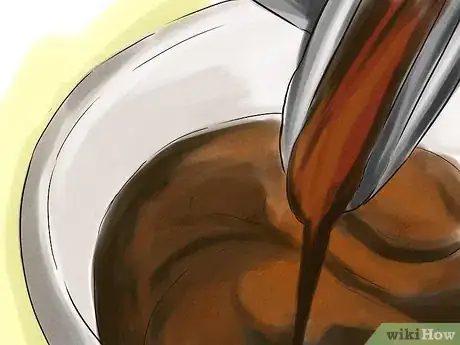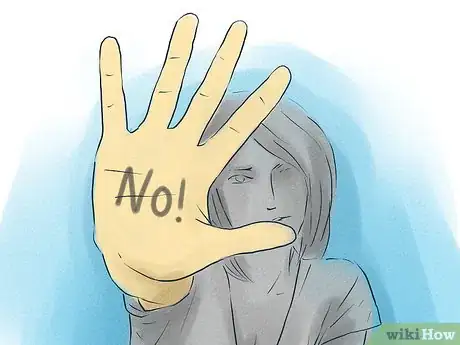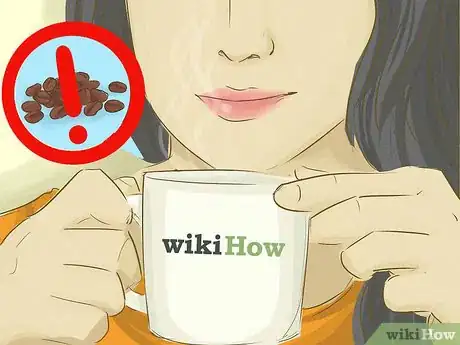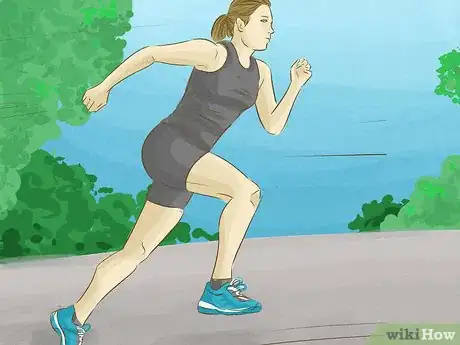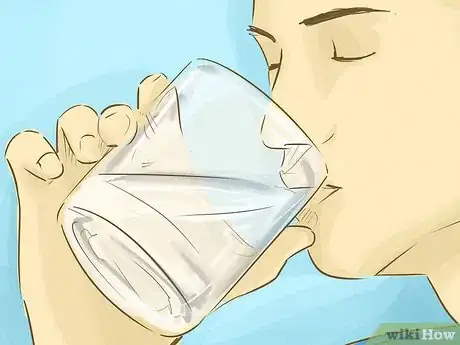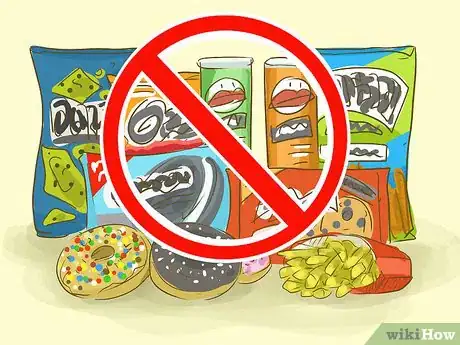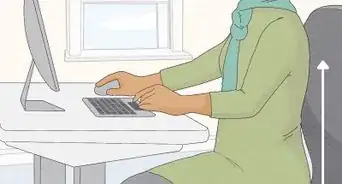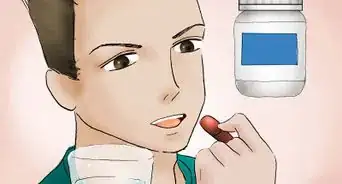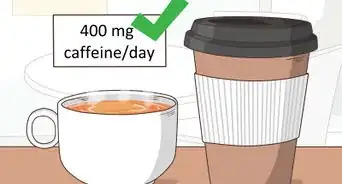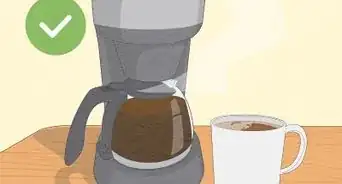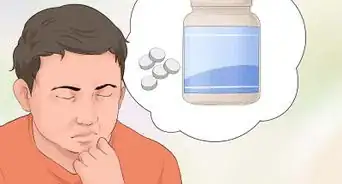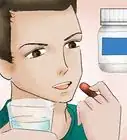This article was co-authored by wikiHow Staff. Our trained team of editors and researchers validate articles for accuracy and comprehensiveness. wikiHow's Content Management Team carefully monitors the work from our editorial staff to ensure that each article is backed by trusted research and meets our high quality standards.
There are 11 references cited in this article, which can be found at the bottom of the page.
wikiHow marks an article as reader-approved once it receives enough positive feedback. In this case, 86% of readers who voted found the article helpful, earning it our reader-approved status.
This article has been viewed 58,536 times.
Learn more...
Many people rely on the caffeine in coffee to wake them up in the morning, to keep them focused in the afternoon, and perhaps to allow for late-night work. But caffeine, like most drugs, can be addictive.[1] Unfortunately, this increased caffeine consumption can lead to sleep loss and stress, and can yellow your teeth among other negative effects. Teaching yourself how to cut down on coffee consumption will allow you to break free from this vicious cycle of alertness and drowsiness.
Steps
Cutting or Quitting Quickly
-
1Avoid quitting all caffeine abruptly. The first step in reducing coffee consumption is understanding that caffeine is habit-forming and cannot be dropped "cold turkey." If you currently drink four cups of coffee per day, for example, make plans to gradually cut that to three, and then two, and so on. Caffeine withdrawal isn't serious, but it isn't fun either, leading to headaches, crankiness, and tiredness for 1-2 weeks.[2]
- Set goals for the future, such as, "I want to drink two less cups of coffee a week by next month." This makes your quest to cut caffeine much more specific and attainable.[3]
- If you have headaches, use acetaminophen to temporarily stave off the effects of caffeine withdrawal. Aspirin and ibuprofen can both exacerbate acid reflux caused by coffee.[4]
-
2Dilute your coffee with water or extra milk. An easy and gradual way to begin cutting down coffee consumption is by adding hot water to your coffee. This will allow you to drink the same number of cups per day, so you won't be subjected to the stress of a sudden change in habit. If the watered down taste isn't any good for you, leave more room for milk or cream to get the same effect.
- You can begin by filling your cup 3/4 full with coffee and then topping it off with water, and eventually move to an even mixture of coffee and water.
- This works at coffee shops, too. You simply have to ask for your coffee to be diluted.
- Have you coffee iced, with plenty of ice cubes, "add water" easily.
Advertisement -
3Drink something else in place of coffee -- from tea the coffee substitute Teeccino.[5] At the very least, keep a water bottle nearby so that you always have something to sip on. Oftentimes, the desire to drink coffee just comes from wanting to hold something and sip while working, a desire you can head off with any other drink. From hot teas with lower caffeine levels to fruit juices, don't just eliminate the coffee from your life -- replace it.
- If you want to quit coffee because of acid reflux or digestion problems, stay away from lemony and other acidic drinks. Try out ginger, chamomile, green, or other soothing teas.
- Switch to half-caf or decaf coffee if caffeine is your worry. This can also be done gradually, by filling a cup 3/4 full with regular coffee and 1/4 full with decaf and then increasing the proportion of decaf from there.
-
4Don't buy coffee. If you don't have beans in your house, you can't make a cup of coffee. If you don't ever walk into the cafe, you can't order a latte. One of the best ways to defeat temptation is to eliminate the opportunity to be tempted. If you stop buying coffee, or simply buy less than you normal would for the week, you will have no choice to cut back on consumption.[6]
-
5Keep the benefits of a smaller coffee diet in the front of your mind. You're not doing this for nothing, and cutting your coffee habit back has a host of potential benefits. Use these reasons for motivation, or come up with your own. What is your personal reason to cut back on coffee consumption? Once you know the principle, it is much easier to stick to it. Some good reasons include:
Keeping the Habit Away
-
1Keep consistency in your meal times and coffee consumption to eliminate "treats." If you have coffee with breakfast first thing in the morning, it is much easier to contain your coffee drinking to this one time. However, if you skip breakfast every few days or sleep in often, you start telling your body that coffee is okay -- and desirable -- at any time in the day. Keeping your coffee drinking to a routine is a great way to easily cut back on consumption.
- Hungry people tend to get both tired and cranky, and a cup of coffee seems like the easiest fix. Avoid the temptation by staying well-fed.
-
2Up your exercise regiment, as it produces similar stimulating feelings as coffee. Regular exercise increases blood circulation, wakes up your body and mind, and has long term physical and mental health effects that can't be overstated. Instead of reaching for a cup of afternoon joe, head out for a walk or bike ride. You'll earn a lot more than a smaller coffee bill.
-
3Get more sleep. Caffeine is a temporary solution to a larger problem -- you're simply too tired. Instead of trying to fight the urge to sleep with coffee, recognize that a better, more consistent sleep-cycle is the best thing you can do for your mental and physical health. This means trying to go to bed at the same hour every night, getting up at similar times, and avoiding the cycle of late nights and heavy oversleeping on the weekends.[9]
- Caffeine stays in your system for hours, meaning a late-afternoon coffee will adversely affect your sleep quality. Keep coffee consumption before 1-2PM at the latest. Effects can last up to 8 hours, meaning your sleep will be hurt.[10]
-
4Substitute healthier drinks for coffee, making them part of your routine. If coffee drinking has become a habit for you, you need to recognize your body's very real need to constantly sip on a nearby beverage. Having healthier beverages available is similar to the smoker's trick of reducing the need for handling cigarettes by keeping carrot or celery sticks on hand.
- The most sensible substitute is water. Sipping water throughout the day will not only satisfy your need for having a beverage at hand, but will also make you feel better in general, which will further reduce your perceived need for coffee.[11]
- This technique is also instrumental in weening yourself from large caffeine intakes. Black tea is stimulating but provides less caffeine than coffee. Green and white teas provide even less caffeine, while herbal teas provide none at all.[12]
-
5Ensure that your diet is balanced. For many coffee consumers, caffeine is a crutch used to escape the crashes caused by a carbohydrate-heavy diet. If your diet is heavy in carbohydrates (including starches and refined sugars), you will tend to experience more dramatic highs and lows that you may attempt to "correct" by drinking coffee. To help you reduce the need for caffeine, make sure that each meal you eat provides carbohydrates, proteins, and fats. Getting your calories from balanced sources will have a dramatic impact on your perceived need for coffee consumption.[13]
- This problem is especially important during working hours, when many people have access primarily to sugary snacks from office vending machines. Packing your own healthy snacks is helpful in this setting.
-
6Set your personal coffee limit and stick to it. Saying you want to cut down on coffee is a great first step, but it isn't the only one. Make a measurable goal for yourself and it will be much easier to stick to, like only 1 coffee a day, no coffee after noon, or only visiting the nearby cafe on the weekends. Vague, larger goals like "cutting down" are hard to stick by. Specific, measurable goals are much easier to get down.
- These goals can change, of course. You might start by saying "no coffee after noon" for the first two weeks, then gradually eliminate 1-2 cups a week as your body gets used to less coffee.[14]
Things You'll Need
- Healthy snacks
- Water
- Green or black tea
- Decaf coffee
References
- ↑ http://www.webmd.com/balance/caffeine-myths-and-facts
- ↑ http://www.bustle.com/articles/108458-how-to-cut-back-on-caffeine-with-5-easy-tips-thatll-actually-make-it-seem-possible
- ↑ http://lifehacker.com/5944489/how-to-kick-your-caffeine-addiction-and-actually-enjoy-your-coffee-again
- ↑ http://www.health.com/health/gallery/0,,20576536,00.html/view-all#take-a-tylenol-0
- ↑ http://www.eatingbirdfood.com/how-i-cut-back-on-coffee/
- ↑ http://www.eatingbirdfood.com/how-i-cut-back-on-coffee/
- ↑ http://www.caffeineinformer.com/benefits-quitting-caffeine
- ↑ http://www.thedailymeal.com/surprising-reasons-you-should-cut-back-coffee/21014
- ↑ http://www.health.com/health/gallery/0,,20576536,00.html/view-all#get-more-sleep-2
- ↑ http://www.webmd.com/balance/caffeine-myths-and-facts
- ↑ http://www.eatingbirdfood.com/how-i-cut-back-on-coffee/
- ↑ http://lifehacker.com/5944489/how-to-kick-your-caffeine-addiction-and-actually-enjoy-your-coffee-again
- ↑ http://www.health.com/health/gallery/0,,20576536,00.html#eat-healthier-food-0
- ↑ http://www.bustle.com/articles/108458-how-to-cut-back-on-caffeine-with-5-easy-tips-thatll-actually-make-it-seem-possible


